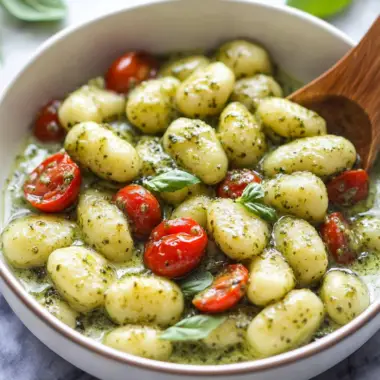Simple Bolognese is the quintessential Italian meat sauce that warms both the body and soul. Traditionally prepared with a blend of finely chopped vegetables, ground beef, wine, milk, and tomatoes, this dish simmers slowly to achieve its rich, velvety depth. It’s a meal steeped in heritage rooted in the culinary traditions of Bologna, Italy and one that’s universally loved for its bold flavor and home-cooked comfort. Perfect for chilly nights, lazy Sundays, or dinner parties that deserve a rustic centerpiece, this Bolognese clings lovingly to pasta ribbons like tagliatelle or pappardelle. Serve it with a generous sprinkle of Parmesan and fresh herbs for a meal that feels both indulgent and timeless. Whether you’re a seasoned cook or just starting your journey into Italian cuisine, this dish delivers satisfaction in every bite.
Full Recipe:
Ingredients:
-
2 tablespoons olive oil
-
1 small onion, finely chopped
-
1 carrot, finely chopped
-
1 celery stalk, finely chopped
-
2 garlic cloves, minced
-
1 pound ground beef
-
1/2 cup dry white wine
-
1 cup whole milk
-
1/4 teaspoon ground nutmeg
-
1 (28-ounce) can crushed tomatoes
-
Salt and freshly ground black pepper, to taste
-
Fresh basil or parsley, for garnish
-
Grated Parmesan, for serving
-
Pasta of choice (tagliatelle, pappardelle, or spaghetti)
Directions:
-
In a large heavy pot or Dutch oven, heat the olive oil over medium heat.
-
Add the onion, carrot, celery, and garlic. Cook for 6–8 minutes until softened and fragrant.
-
Add the ground beef, breaking it apart with a spoon, and cook until browned and cooked through.
-
Pour in the wine and let it simmer until reduced by half, about 3–4 minutes.
-
Stir in the milk and nutmeg, letting the mixture simmer gently for 5 minutes.
-
Add the crushed tomatoes and stir everything together.
-
Lower the heat and let the sauce simmer uncovered for 1.5 to 2 hours, stirring occasionally.
-
Season with salt and pepper to taste.
-
Serve over freshly cooked pasta and top with Parmesan and herbs.
Prep Time: 10 minutes | Cooking Time: 2 hours | Total Time: 2 hours 10 minutes
Kcal: 390 kcal | Servings: 4 servings
The Comfort and Craft of Classic Bolognese Sauce
Italian cuisine is celebrated around the world for its rich history, use of fresh ingredients, and comforting flavors. Among its most beloved staples is Bolognese sauce, a hearty and soul-warming meat-based pasta sauce originating from Bologna, Italy. This dish, known as Ragù alla Bolognese in its homeland, represents the heart of Italian family-style cooking. Its simplicity is deceptive behind the straightforward ingredients lies a complex layering of flavors achieved through slow cooking and time-honored techniques.
In this article, we’ll delve into the story, flavor profile, culinary importance, and cultural roots of Bolognese sauce. Whether you’re a home cook, a pasta lover, or a food enthusiast, understanding the depth and beauty of this dish will enhance your appreciation and perhaps your own preparation of this Italian classic.
A Culinary Heritage Rooted in Tradition
Bolognese sauce has its roots in Emilia-Romagna, one of Italy’s most gastronomically rich regions. Bologna, its capital, is widely regarded as a food capital in Italy, known for its high-quality produce, meats, and traditional cooking methods. Unlike the commonly misrepresented versions of Bolognese found outside Italy often involving a quick fry-up of ground beef and tomato sauce the true Bolognese is a slow-cooked ragù that requires time, patience, and care.
Traditionally, the sauce is made with a soffritto of finely chopped onions, celery, and carrots sautéed in olive oil or butter. It’s then layered with ground meat, wine, milk, and tomatoes. What makes this sauce unique is not just its ingredients, but the deliberate cooking process, which involves slowly simmering the mixture over low heat to coax out the richness of the meat and deepen the flavors of each component.
In fact, the Accademia Italiana della Cucina (Italian Academy of Cuisine) formally registered an official recipe for Ragù alla Bolognese with the Bologna Chamber of Commerce in 1982, cementing its authenticity.
A Harmony of Flavor and Technique
At first glance, the list of ingredients might seem modest, but it’s the method that elevates this dish to something extraordinary. The Bolognese sauce develops a profound depth of flavor through maillard reactions, wine reduction, and fat rendering. Each layer is cooked until perfectly caramelized before the next is added. For instance, browning the meat thoroughly enhances its savory flavor, while the white wine and milk each serve a vital function: the wine deglazes the pan and brings acidity, while the milk tenderizes the meat and softens the overall profile of the sauce.
Over time, the sauce transitions from a collection of individual ingredients into a cohesive, luscious mixture that envelops your pasta like a velvet robe. It clings beautifully to flat noodles like tagliatelle, or pappardelle both ideal vehicles due to their width, which catches the meaty sauce better than spaghetti.
Not Your Average Tomato Sauce
It’s important to distinguish Bolognese from other tomato-based sauces. While many quick sauces rely heavily on tomatoes, Bolognese is a meat-forward sauce where the tomatoes serve more as a background note than the star. This makes it a deeply satisfying and savory experience, more akin to a stew than a bright, acidic marinara.
The inclusion of milk might surprise some, but it plays a crucial role in mellowing the acidity of the tomatoes and contributing to the sauce’s silky texture. The final product isn’t tomato-red but rather a warm, reddish-brown a visual cue that signals a well-prepared ragù.
A Versatile Sauce with Endless Possibilities
One of the strengths of Bolognese is its versatility. While traditionally paired with fresh egg pasta, it can also be layered into lasagna or served over gnocchi. Modern interpretations include vegetarian or even lentil-based Bolognese sauces, which emulate the hearty texture of the original without meat.
For families, it’s an ideal make-ahead dish. Bolognese can be made in large batches, refrigerated for several days, or frozen for future meals. Like many slow-cooked dishes, the flavor often improves with time, making leftovers even more satisfying.
Cultural Significance and the Comfort of Home
In Italy, food is a deeply personal and emotional experience, often tied to memories and traditions. Bolognese sauce, in particular, holds a special place at the table, especially on Sundays or during festive family gatherings. It’s the kind of meal that evokes feelings of comfort, nourishment, and home.
This dish also serves as a symbol of patience in cooking. In a fast-paced world where meals are often rushed, taking the time to prepare a traditional Bolognese sauce is an act of love and craftsmanship. It teaches us to slow down, enjoy the process, and savor each bite.
A Global Misunderstanding (And Redemption)
Many outside of Italy mistakenly equate Bolognese with “spaghetti bolognese,” a dish more popular in the United States and the UK than in Italy itself. In Bologna, you’ll likely never see this sauce served with spaghetti, which Italians believe lacks the surface area needed to support a hearty meat sauce.
Thanks to culinary education and food blogs, however, there is a growing awareness and revival of authentic Bolognese, sparking new interest in traditional Italian cooking methods and regional specificity.
Health Considerations and Nutritional Balance
While Bolognese is indulgent, it’s also relatively nutritionally balanced. The combination of protein from the meat, healthy fats from olive oil, and complex carbohydrates from pasta creates a satisfying meal that can be part of a well-rounded diet.
Portion control and ingredient quality make a big difference. Using lean meat, fresh herbs, and moderate salt levels can turn this into a wholesome and nutrient-dense dinner. Pair it with a simple green salad and a glass of red wine, and you’ve got yourself a true Mediterranean-style meal.
Conclusion:
The Simple Bolognese recipe is far from simple in flavor it’s a slow-cooked symphony of taste, texture, and aroma that rewards patience with rich, soul-satisfying results. Whether you’re aiming to recreate a taste of Italy or looking for a new comfort food staple, this sauce delivers in every way.
Mastering this dish is a rite of passage for any home cook who values authenticity and tradition. It’s more than just a recipe; it’s a story, a memory, and an experience you can share with those you love. Serve it with pride, and let every bite take you on a journey to the heart of Italian cuisine.








